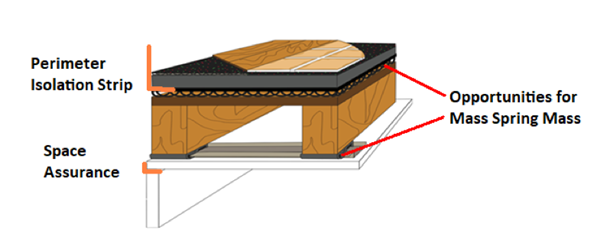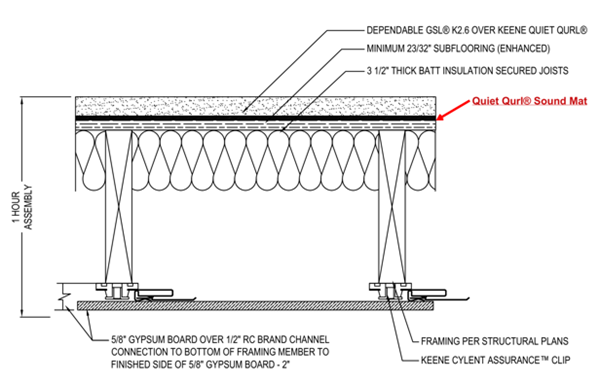
Building a Better Sound Trap
Pt. 2 – Creating Resilient Channels
The more opportunities you can create Mass Spring Mass the better the sound attenuation of the system. It is of critical importance to do this by separating the gypsum panel ceiling from the actual framing assembly. The best way to do this is by the use of resilient channel. This provides an additional “spring” between the two masses of the floor framing and the gypsum panel ceiling. Again, the devil is in the details, so it is extremely important to make sure you use the right resilient channel and pay close attention to the installation of that channel. Too often, short circuits are created by improper installation.
Going one step further, a resilient channel isolation clip like Keene Building Products' Cylent Assurance™ Clip can be utilized to dramatically increase the sound attenuation of low frequency impact noise. The use of this product can put your floor ceiling assembly in the "luxury living" category.
The figures below outlines the potential opportunities for Mass Spring Mass and enhanced sound control:
FIGURE 1:

FIGURE 2:

More Considerations:
Flanking Paths:
Flanking paths occur where there is a high degree of rigidity between the connection points in the building structure. By creating breaks between these connection points, you can mitigate the transfer of airborne and impact sound. These can occur between the horizontal floor and wall assemblies, and at the connection point between the horizontal gypsum panel ceiling and the vertical gypsum panel wall. The use of acoustical caulk or an isolation foam perimeter strip, like Keene Building Products Space Assurance™, can provide that isolation break that is needed.
Penetrations:
Any hole in the assembly created by plumbing, HVAC, light fixtures, smoke detectors and sprinkler heads can negate the sound attenuation of a system. The use of acoustical caulk around these opening is necessary in mitigating the transfer of sound through the assembly.
In the proper design of a multi-family building, all of the above need to be taken into consideration in order to create a safe and quiet environment for the occupants. Paying attention to the details will always go a long way.